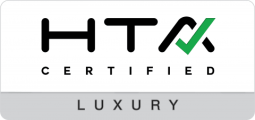Top Home Automation Trends for 2025: Enhance Your Smart Living
Top Home Automation Trends for 2025: Enhance Your Smart Living
Wondering how smart homes are evolving? By 2025, home automation trends for 2025 will see a rise in AI-powered solutions, integrated renewable energy systems, enhanced connectivity, advanced security, and health innovations. This article highlights the key advancements you can anticipate.
Key Takeaways
-
Smart home technology in 2025 emphasizes personalized experiences, energy efficiency, convenience and peace of mind.
-
Health and wellness innovations, including monitoring devices and smart climate control, are central to smart homes, promoting a healthier living environment.
The Evolution of Smart Home Technology in 2025
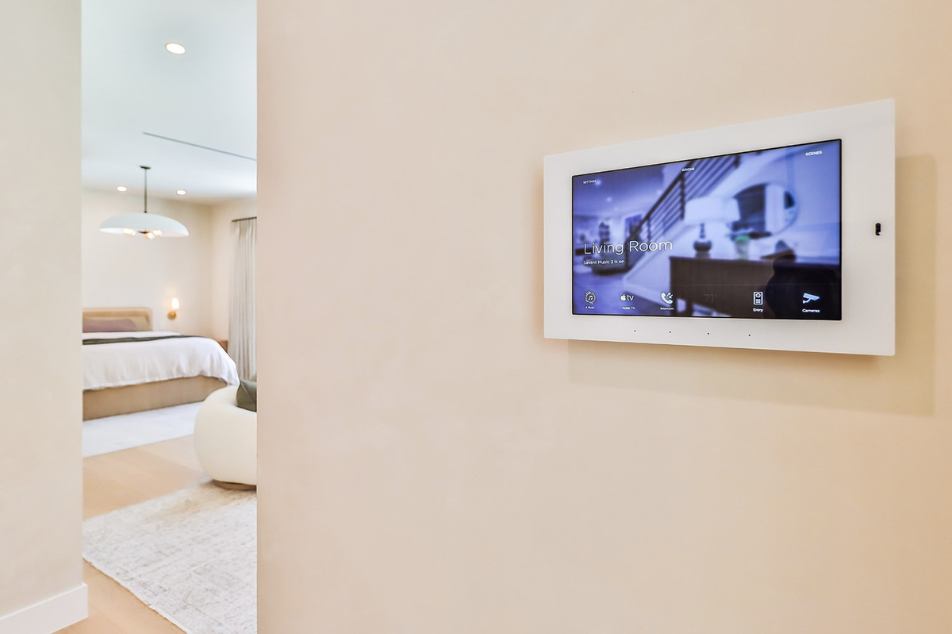
The smart home industry has transformed remarkably in recent years. By 2025, it will meet modern demands through advanced features that boost convenience and comfort. The modern smart home revolution emphasizes at-home health technology, which has become increasingly popular since the pandemic. This shift has made smart homes more tailored to individual needs, focusing on energy efficiency and tailored experiences.
Key features of home automation trends in 2025 include:
Smart home solutions now allow homeowners to tailor their surroundings and manage their residences with a level of sophistication previously unimaginable. This digitally integrated space adapts to the inhabitants’ needs, ensuring a smarter and more connected living experience.
Smart home technology aims to offer users a more connected future. Embracing these innovations enhances comfort, security, and efficiency, making daily life more convenient and enjoyable.
Home Automation Solutions
Home automation solutions are central to modern smart home technology, enhancing functionality and catering to specific preferences for greater convenience and efficiency. Imagine adjusting your lighting, securing your property, and optimizing energy use automatically, all tailored to your daily routines and preferences.
Today's home technology transcends basic automation, offering customization that lets homeowners delegate mundane tasks and focus on what matters. Whether regulating lighting or improving smart kitchen appliances, home automation is revolutionizing home living. The result is a home environment that is not only smart but also deeply personalized.
Integration with Renewable Energy Systems
Sustainability is a key focus in the evolution of smart home technology. Integration with renewable energy systems supports sustainability goals while reducing operational costs. Automated systems dynamically manage energy use, optimizing lighting and HVAC based on real-time data. This not only enhances energy savings but also ensures an eco-friendlier home environment.
These technologies promote significant cost savings and continuously optimize energy use, contributing to a sustainable lifestyle that aligns with growing consumer interest in energy efficiency and environmental responsibility.
Advanced Security Camera Systems for Modern Homes
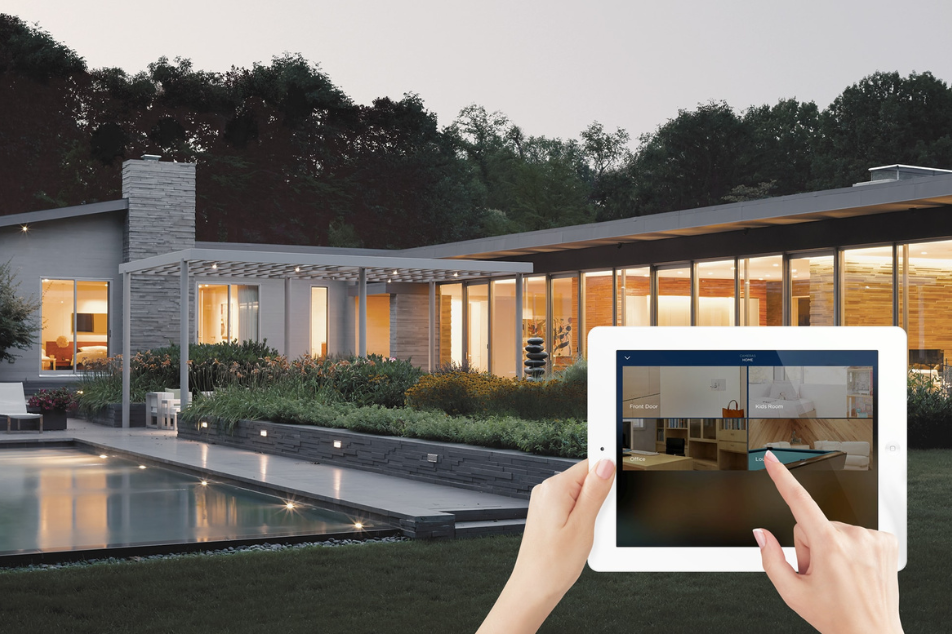
Smart Cameras and Surveillance
Smart cameras enhance home security through advanced surveillance features, ensuring homeowners enjoy a secure and comfortable living environment.
Security remains a top concern for homeowners, with advanced systems evolving to meet modern needs. Proactive solutions aim to enhance safety by anticipating threats before they occur. These systems use AI-powered technologies like facial recognition, license plate detection, and advanced motion detection to enhance security measures in homes.
Modern smart cameras equipped with advanced analytics can differentiate between familiar faces and pets, improving home monitoring and reducing false alarms. AI-enhanced surveillance systems recognize specific behaviors, allowing for rapid response to suspicious activities.
The integration of smart sensors with surveillance systems allows for automated responses to detected anomalies, further enhancing safety.
Smart Locks and Facial Recognition
Smart locks are now essential in modern home security, offering reliable access control and enabling homeowners to manage access remotely, enhancing convenience and security. Smart doorbells equipped with cameras notify homeowners of visitors and allow for remote interaction, further adding to the security features.
The integration of smart locks and doorbells together offers a comprehensive security solution for protecting living spaces. These features ensure that homeowners can monitor and control access to their homes from anywhere, providing peace of mind.
Real-Time Alerts and Remote Monitoring
Real-time alerts and remote monitoring are crucial for modern home security. Smart cameras detect anomalies and provide immediate notifications. This ensures that homeowners are always aware of any potential security breaches, enhancing their control and peace of mind.
Remote monitoring lets homeowners oversee their property from anywhere, anytime. Combining real-time alerts with remote monitoring ensures they always feel secure and informed.
Proactive Problem-Solving Features
AI-powered security systems enhance safety by anticipating needs, using advanced algorithms to predict risks based on user behavior and preferences. By providing timely alerts and proactive measures, these systems help users feel more secure in their homes.
The proactive problem-solving features of these systems ensure that homeowners can rest easy knowing that their home security is always one step ahead. This level of sophistication in home security is setting new standards for safety and peace of mind.
Voice Control and Intelligent Assistants
Voice control and intelligent assistants like JoshAI are transforming home interactions, offering significant convenience in managing various functions. These voice-activated technologies streamline how users interact with their home technology and entertainment systems, allowing hands-free control of various devices.
Smart home interfaces are designed to enhance accessibility, simplifying navigation and control of devices. Recent investments in AI have further enhanced the functionality of these voice-activated devices, replacing older models with more intuitive and efficient systems.
Hands-Free Control of Home Functions
Voice commands enable effortless management of home functions like lighting and climate control, enhancing convenience. This hands-free operation makes daily tasks more manageable.
The integration of voice commands in home automation systems leads to a more intuitive and efficient living environment. Whether it’s adjusting the lighting or setting the thermostat, voice control simplifies the process, making smart living more accessible to everyone.
Overcoming Privacy and Accuracy Challenges
Despite its convenience, voice control raises privacy concerns. Advanced security systems are crucial for protecting smart home devices from unauthorized access and breaches. Smart locks and facial recognition technologies provide enhanced security, ensuring that only authorized individuals can access living spaces.
Real-time alerts and remote monitoring capabilities keep homeowners informed about potential security breaches, further reinforcing privacy. AI-powered security systems can anticipate and neutralize potential privacy threats, ensuring a safer home environment.
Balancing hands-free control with vigilant privacy measures is essential for maintaining a secure and comfortable home.
Health and Wellness Innovations in Smart Homes
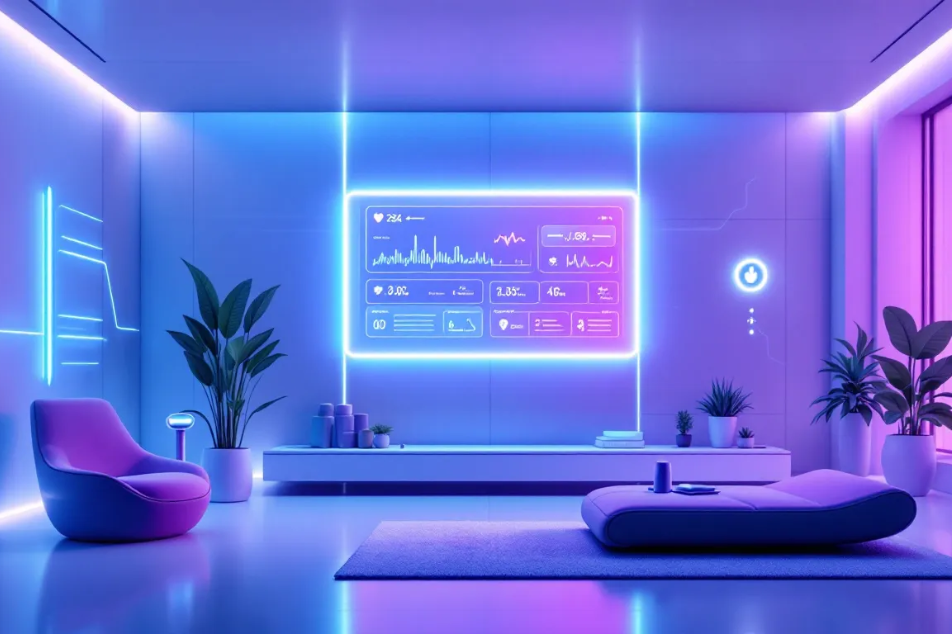
Health and wellness innovations are becoming integral to smart home technology, with advanced monitoring devices providing critical data on vital signs for timely medical interventions. Smart home technology integrates features that can significantly improve physical health and mental wellness.
At-home diagnostic kits for monitoring health, such as testing for nutrient deficiencies and cholesterol levels, have garnered significant interest, ensuring smart living enhances overall well-being.
Improving Sleep Quality
Smart climate control systems adjust temperature and humidity to optimize sleeping conditions, crucial for overall health.
Smart home systems can automatically adjust room temperature, ensuring a comfortable and restful sleep.
Air Quality and Climate Control
Monitoring and improving air quality is crucial in smart homes. Advanced health devices often include sensors that detect pollutants and allergens, promoting well-being. Smart thermostats learn user habits to optimize temperature control, which assists in enhancing indoor air quality.
Automated systems manage heating and cooling to maintain optimal conditions, ensuring a comfortable and healthy living space for inhabitants.
Smart Thermostats and Energy Management
Smart thermostats optimize temperature based on schedule, weather, and occupancy, enhancing energy efficiency by reducing use, lowering bills, and decreasing carbon footprint.
Geofencing and in-room motion sensors enable smart thermostats to adjust temperature based on location and occupancy.
Automated Systems for Energy Savings
Automated systems optimize energy efficiency by controlling lighting, heating, and cooling. Smart lighting systems adjust based on schedule and occupancy, significantly reducing energy use. These automation solutions ensure that energy is used only when necessary, contributing to substantial energy savings over time.
Integrated with other smart devices, these systems create an efficient home environment, enhancing convenience and promoting sustainable living.
Sustainable Living Spaces
Demand for sustainable living spaces is rising with growing environmental awareness. Home batteries are becoming popular for providing a reliable energy source. Skyrocketing electricity prices and a focus on energy independence drive demand for these technologies.
Integrating technologies like home batteries leads to cost savings and environmental benefits, making sustainable living spaces essential in smart home technology.
The Future of Home Entertainment with Smart Technology
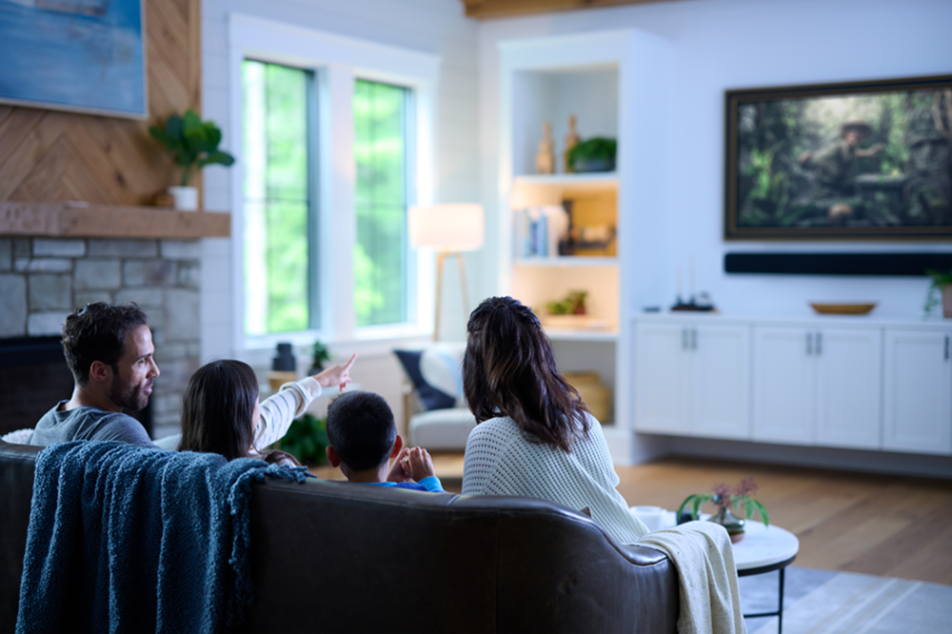
Home entertainment is revolutionized by smart technology. Large screens between 70 to 100 inches offer immersive viewing experiences. Improved upscale processing enhances picture quality, making home entertainment more vivid and lifelike.
Integrating services like TV, Internet, and phone is now designed for a seamless user experience. Voice commands can manage kitchen appliances, allowing users to preheat ovens or make coffee remotely. These advancements make home entertainment more integrated and convenient.
Connected Devices for Enhanced Entertainment
Smart devices are increasingly controlled by a centralized system, enabling synchronized audio and video experiences across rooms. This level of connectivity ensures that home entertainment is seamless and enjoyable. By centralizing control, homeowners can create a cohesive entertainment environment that enhances their overall smart living experience.
Centralized Control Hubs for Seamless Management
Centralized control hubs streamline the management of multiple smart devices, enhancing efficiency and offering the convenience of a single interface. This streamlined operation ensures users manage their smart homes more effectively and efficiently.
Smart home hubs are becoming more user-friendly and powerful, serving as the central interface for managing devices efficiently. Voice assistants now offer multi-room control, allowing seamless management across the entire home.
Unified Platforms for Device Management
Centralized control hubs offer convenience and efficiency, streamlining the management of critical systems like lighting, security, and climate control through unified platforms. These hubs serve as the backbone of smart home management, providing a unified platform for various devices.
This level of integration ensures that managing a smart home is straightforward and efficient. Users can easily control and automate their home environments, making smart living more accessible.
User-Friendly Interfaces
User-friendly interfaces in smart home technology make managing systems more accessible and less daunting. Intuitive interfaces are vital for easy navigation and management.
These interfaces simplify smart home management, making it easier to control and automate home environments.
Customizable Settings and Preferences
Centralized control hubs efficiently manage various smart home systems, providing a foundation for customizable settings and seamless integration of lighting, security, and climate control.
Customizable settings empower homeowners to personalize their smart home experiences to fit their lifestyles and preferences.
Summary
The advancements in smart home technology in 2025 are nothing short of revolutionary. From AI-powered automation and renewable energy integration to advanced security systems and health-focused innovations, smart homes are becoming more sophisticated and user-centric. These technologies not only enhance convenience and efficiency but also promote sustainability and well-being.
As we embrace these innovations, the future of smart living looks incredibly promising. By integrating cutting-edge technology into our daily lives, we can create homes that are not only smart but also deeply attuned to our needs and preferences. The possibilities are endless, and the journey towards a smarter, more connected future has just begun.
Frequently Asked Questions
What are the key features of smart home technology in 2025?
Smart home technology in 2025 is centered around seamless integration, voice-first control, and AI-driven automation. Key features include advanced voice assistants with natural language understanding, remote access and monitoring, enhanced security and surveillance systems, energy-efficient lighting and climate control, and interoperability across platforms and devices. Systems are now more intuitive, learning user preferences and routines to create personalized, adaptive living environments—all while prioritizing data privacy and cybersecurity.
How do AI-powered automation solutions enhance smart home functionality?
AI-powered automation solutions significantly enhance smart home functionality by streamlining daily tasks, improving energy efficiency, and creating personalized environments tailored to user preferences. This integration leads to a more convenient and efficient living experience.
What benefits do smart thermostats offer?
Smart thermostats provide significant benefits by optimizing temperature settings based on your schedule, weather conditions, and occupancy, which can lead to reduced energy consumption, lower utility bills, and a smaller carbon footprint.
How do smart home systems improve health and wellness?
Smart home systems enhance health and wellness by integrating health monitoring devices, improving sleep quality through climate control, and enhancing air quality, all of which promote overall well-being.
What role do centralized control hubs play in smart homes?
Centralized control hubs are essential in smart homes as they unify the management of various devices, offering a streamlined platform for effective control over lighting, security, and climate systems, ultimately enhancing efficiency and user convenience.
Categories
- Audio-Video
- Home Theater Installation
- Smart Security Systems
- Wi-Fi & Networking Systems
- Control4 Systems
- Savant Control Systems
- Nice Home Management - Elan Control Systems
- Motorized Window Treatments
- Dimmer Switches
- Outdoor Entertainment
- Professional Installation
- Smart Home Automation
- Smart Lighting Systems
- Surround Sound Systems

